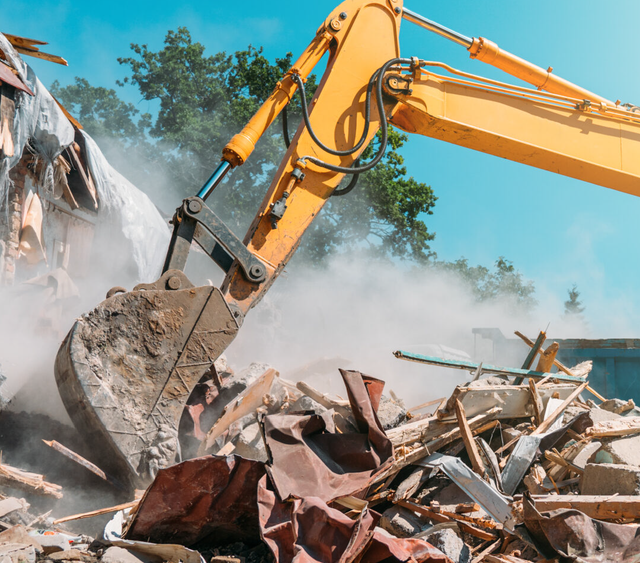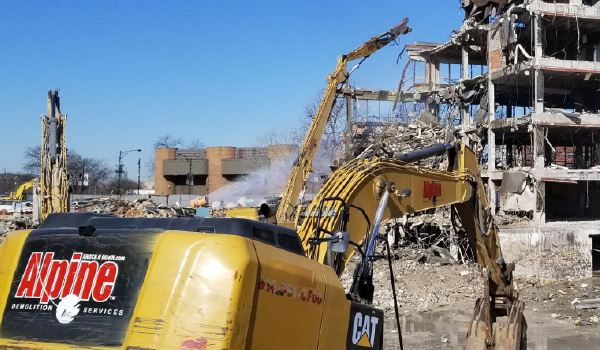Browsing Safety Regulations in Interior Demolition: A Comprehensive Guide
Browsing Safety Regulations in Interior Demolition: A Comprehensive Guide
Blog Article
The Ultimate Overview to Interior Demolition Techniques and Equipments
Within the world of indoor remodellings, the art of demolition is an essential phase that requires precision, skill, and the right collection of devices. Whether you are a skilled specialist or a do it yourself enthusiast, comprehending the intricacies of indoor demolition strategies can make all the difference in achieving an effective task end result. As we browse with the subtleties of this thorough overview, we will certainly discover important tools, safety measures, and professional methods that are vital when starting the trip of changing an area. Remain tuned to uncover the key understandings that can boost your demolition expertise to new heights.
Necessary Indoor Demolition Tools
When undertaking indoor demolition jobs, having the appropriate devices is essential for efficiency and safety and security. Among the most critical tools for interior demolition is the demolition hammer. This sturdy tool is created to damage with difficult products like concrete, ceramic tile, and drywall. Its powerful hammering activity can rapidly knock down walls, floorings, and various other frameworks. Additionally, a crowbar is vital for removing components, trim, and other products. Its take advantage of enables the very easy extraction of nails and other bolts without harming the surrounding surfaces - interior demolition.
Its capacity to make specific cuts in limited rooms makes it ideal for demolition job. Overall, having these essential interior demolition tools will considerably boost the effectiveness and safety of any type of demolition task.

Safety And Security Precautions During Demolition

Furthermore, all employees included in the demolition process should get adequate training on the proper handling of devices and equipment to decrease accidents. By adhering to these security precautions, interior demolition projects can be lugged out successfully while focusing on the wellness of all people involved.
Strategies for Getting Rid Of Walls
Executing correct safety and security preventative measures throughout indoor demolition jobs is critical for creating a protected workplace, and one crucial element of such projects entails understanding strategies for removing walls. One frequently made use of approach is hands-on demolition, which needs using basic hand devices such as sledgehammers, crowbars, and utility blades to very carefully take apart the wall surface piece by item. This technique allows for better control over the demolition procedure, specifically in delicate areas where accuracy is vital.
For larger, a lot more complicated walls, mechanical demolition may be necessary. This includes using hefty machinery like excavators or excavators to tear down wall surfaces successfully. Nonetheless, it is vital to make sure that the architectural stability of the structure is not jeopardized throughout mechanical demolition.
One more technique for removing walls is deconstruction, where the wall is dismantled in such a way that maintains reusable materials. This sustainable method is eco-friendly and can also help in reducing disposal expenses. Whichever technique is utilized, it is vital to comply with appropriate security protocols and think about the structural effects of wall removal to guarantee an effective interior demolition task.
Removing Floor Covering Like a Pro
Successfully eliminating flooring during indoor demolition requires the proper tools and methods to ensure a smooth and successful procedure. The very first action in eliminating floor covering is to get rid of the location of any kind of furnishings or barriers. Next off, recognize the sort of floor covering to establish the suitable removal technique. For wood or laminate floor covering, beginning by removing the walls and after that make use of a flooring scrape to raise and remove the slabs. Carpeting removal involves cutting the carpeting right into workable areas and rolling it up for disposal. For click this link floor tile or vinyl flooring, a chisel or flooring scraper can be utilized to pry up the floor tiles or sheets. It's vital to wear safety gear such as handwear covers, safety glasses, and a mask to stop injuries and direct exposure to dust and particles. Additionally, having a dumpster or designated disposal location ready for the gotten rid of flooring products is vital for maintaining a tidy work setting. By following these methods and utilizing the right tools, getting rid of flooring like a pro can be attained effectively and effectively.
Proper Waste Disposal Techniques
After efficiently removing flooring using the suitable tools visit the site and techniques, the next essential action in the indoor demolition procedure is applying correct garbage disposal techniques. Appropriate garbage disposal is crucial for keeping a risk-free and clean work environment throughout and after demolition. Among the key techniques for garbage disposal is setting apart materials into various groups such as recyclable, unsafe, and basic waste. This segregation guarantees that materials are taken care of properly and properly.

Professionals need see here now to follow local policies relating to garbage disposal to stay clear of penalties and fines. Utilizing professional waste management solutions can simplify the disposal procedure and ensure compliance with environmental guidelines. By applying proper garbage disposal methods, interior demolition projects can be completed effectively and sustainably.
Final Thought
In verdict, indoor demolition needs making use of necessary devices and stringent safety and security preventative measures to make sure a successful and risk-free procedure. Methods for eliminating wall surfaces and floor covering need to be done meticulously and successfully to prevent any damage or crashes. Appropriate waste disposal methods are also important to maintain a orderly and clean job area. By following these standards, indoor demolition can be completed effectively and with marginal dangers.
One of the most crucial devices for interior demolition is the demolition hammer (interior demolition). On the whole, having these crucial interior demolition devices will significantly boost the effectiveness and safety and security of any type of demolition project
Effectively removing floor covering throughout interior demolition calls for the correct tools and methods to ensure a successful and smooth procedure.After effectively getting rid of flooring using the ideal devices and methods, the next critical step in the interior demolition procedure is executing correct waste disposal methods.In final thought, indoor demolition requires the usage of vital tools and stringent safety and security precautions to make certain a successful and risk-free process.
Report this page